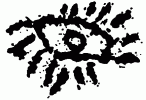GLOSSARY OF ARCHAEOLOGICAL TERMS
ACHEULIAN: A flint industry of the Lower Palaeolithic named after the site of Saint-Acheul in France. It is characterised by the presence of bifacial "hand axes". This industry is widespread in Africa, Asia and Europe. It is well represented in the Har Karkom area.
AIN: (Hebrew) water spring (also EIN)
"ANTHROPO-ZOOMORPHIC" STONES (OR ROCKS): This term defines natural boulders with peculiar anthropomorphic and/or zoomorphic natural shapes which appear to have been collected by early man. Frequently such stones have been retouched by man emphasising some of the characteristic features like eyes, nose or hand-fingers. In Har Karkom about 60 such collections of "anthropo-zoomorphic" stones have been detected.
ATERIAN: A North African stone industry named after Bir el-Ater in Tunisia, belonging to the Late Middle Palaeolithic. It is widespread over the Maghreb, the Sahara and the Nile Valley. It is characterised by flake tools which have notches and tangs, presumably used for hafting. At Har Karkom, Aterian-like tanged implements are recorded in several sites.
AURIGNACIAN: A flint industry named after the French site of Aurignac, belonging to an early phase of the Upper Palaeolithic. It is mainly characterised by blades with heavy marginal retouch and carinated steep end-scrapers. Different faces of Aurignacian are known in Europe and the Near East. At Har Karkom an "Aurignacian-like" industry is characterised by the above-mentioned type-tools, of rather large size. In our sequence it is considered as Early Upper Palaeolithic.
| 


